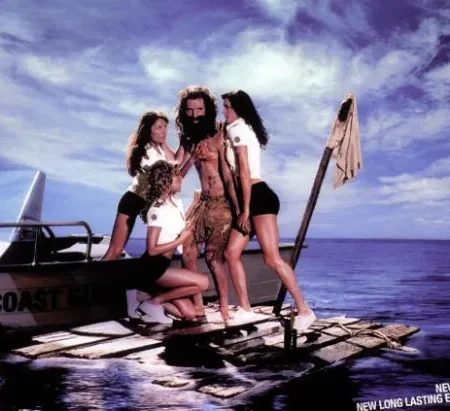The 1990s were a time of bold, often over-the-top advertising, with brands eager to stand out in an increasingly crowded market. Some ads pushed boundaries so far they became infamous, generating backlash and controversy. From edgy humor to eyebrow-raising imagery, these ads simply wouldn’t survive in today’s more socially aware world. Here’s a look at 14 unforgettable 90s ads that shocked audiences and wouldn’t make it past the planning stage today.
Calvin Klein’s Provocative Ads
Calvin Klein ads were known for stirring the pot, and in the 90s, they sparked plenty of debate. In one campaign, teenage models posed in ways some critics found overly suggestive, pushing the line of what was appropriate. In 1999, Calvin Klein ran another campaign featuring young kids in underwear, quickly receiving backlash from children’s advocates and canceled the campaign. In today’s world, with a focus on protecting young audiences, these ads would almost certainly face criticism for insensitivity.
NEO-GEO’s Suggestive Video Game Ad
NEO-GEO’s ad in the early 90s attempted to appeal to adult gamers by using innuendo. The ad featured a line reading, “He used to play all night with me,” with “me” implying a female partner. Though intended to be playful, it ended up being criticized for reinforcing sexist stereotypes. Today, as gaming ads push for inclusivity, this approach would likely backfire, with calls to be more respectful and representative of all gamers.
SEGA’s “Domestic Violence” Ad Misfire
In a strange attempt to stand out, SEGA released an ad featuring a father and son smiling as they played a fighting game, with the words “Domestic Violence” written in bold red letters across the image. The ad’s dark humor didn’t land, and it faced backlash for appearing to make light of a serious issue. Today, this ad would likely be shut down instantly for insensitivity and poor taste.
Nintendo’s Risqué Game Boy Pocket Ad
Nintendo also tried its hand at edgy marketing with a Game Boy Pocket ad in 1997 that stirred controversy. The ad featured a woman tied to a bedpost, looking “frustrated” while her partner ignored her to play on his Game Boy. However, viewers described her expression as more “terrified” than annoyed. After numerous complaints, the Advertising Standards Authority (ASA) forced Nintendo to pull the ad. Today, this ad would likely be pulled even faster, with brands avoiding these unsettling tones in marketing.
Extreme Body Spray Campaigns
Body spray ads—especially from brands like Axe—were notorious for suggestive themes in the 90s. In these commercials, men using the product would instantly become irresistible to groups of women. Though these ads were memorable, they often drew criticism for objectifying women. Today, ads are shifting toward more respectful portrayals, and such campaigns would quickly be called out for being out-of-touch and sexist.
Cigarette Ads for Kids? Almost!
In the 90s, tobacco companies found ways to reach younger audiences, even though regulations banned marketing to minors. Joe Camel, a cartoon mascot for Camel cigarettes, became particularly controversial because many felt he was designed to appeal to kids. Today, tobacco marketing is much more heavily regulated, and any attempt to attract young audiences would face harsh consequences and immediate backlash.
“Lose Weight Fast” Diet Ads
The 90s saw a flood of diet ads promising dramatic weight loss through pills or “miracle” products. These commercials frequently showed extreme before-and-after photos and often made questionable health claims. In today’s world, which values body positivity and a healthy relationship with weight, these ads would be considered misleading and irresponsible, and they would likely spark criticism for promoting unrealistic standards.
Sugary Cereal Ads Disguised as Health Food
Many 90s cereal ads featured cartoon mascots like Tony the Tiger or Toucan Sam, pushing sugary cereals as part of a “balanced breakfast.” The ads emphasized fun and energy, downplaying the high sugar content. Today, with heightened awareness about sugar’s impact on health, any attempt to pass off sugary cereals as nutritious would be met with skepticism and likely face pushback for misleading consumers.
Celebrity Endorsements Gone Wild
The 90s saw an explosion of celebrity endorsements, with stars like Michael Jordan, Shaquille O’Neal, and Britney Spears promoting everything from soda to sneakers. While these endorsements brought visibility to brands, they sometimes felt random or exaggerated. Today, celebrities face more scrutiny for the brands they endorse, with audiences expecting authentic connections between stars and the products they promote.
The 90s were a unique time for advertising, with brands constantly pushing the envelope to stand out. While many of these ads remain memorable, they remind us of how quickly cultural standards change. Today’s ads focus on inclusivity, respect, and responsibility—proof that sometimes, bold isn’t always better.


